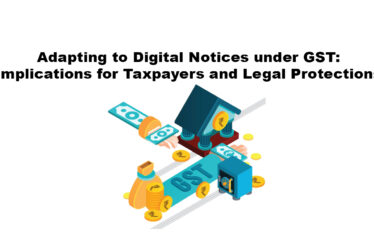Background:
As per the Income Tax law, employers are required to calculate the income tax for each employee based on the chosen tax regime (Old or New) and deduct TDS from their salary accordingly, following the Income Tax Slab Rates. At the beginning of the financial year i.e. in April, employers are required gather declarations from employees regarding their savings, rental expenses, investments, tax regime etc., which are essential for availing exemptions under salaries, commonly referred to as “Income Tax Declarations”.
During the income tax calculation process, declared exemptions and deductions are the primary considerations. The resulting tax amount is then divided into monthly installments, deducted from the employee’s salary each month.
When the last quarter of the financial year begins, employees must keep their documentary proof ready for deductions and exemptions which they had declared at the start of the year. Tax deductions in the month of February and March are solely based on these proofs and not on the declarations. Employers are obligated to reject claims lacking proper proof.
Proof of Investments which are generally provided by employees:
- HRA (House Rent Allowance) – HRA is part of salary structure which can be claimed by employees as deduction. Employer here will have to collect rent agreement and / or rent receipts. If the rent paid is more than Rs.1 lakh per year, then it is mandatory to get the PAN card of the owner.
- Housing Loan EMIs – Here employer should collect certificate from the employee’s bank which had sanctioned the loan. The certificate should mention the total principal amount and the interest paid. Principal amount has an overall cap of Rs 1.5 lakhs per annum which comes under section 80C and interest on loan comes under section 24. An deduction towards loss from house property up to Rs 2 lakhs per year can be claimed on the interest paid for the year.
- Children Education Fees – Employees paying fees for the education of their children can claim deduction under section 80C. The upper-limit for exemption is Rs 1.5 lakhs per parent. Here employer will have to collect school or college or any institution fee receipts from the employee. It is to be noted that only “Tuition Fee” is allowed for deduction.
- Life Insurance Premium – Here receipts for the premium paid should be collected by employer. Here employee can claim exemption even for their spouse or children.
- Mutual Funds – This falls under ELSS scheme and here the deduction can be claimed under section 80C. Here employee has to present the statement of investment to get exemption.
- 80D Medical Insurance – Employee can claim medical insurance premium and expenses towards preventive health check-up paid for self and family. Also, deduction under section 80D for medical expenses or medical insurance of senior citizen dependent parents can be claimed. The exemption limits are different for different age groups. Individual with family under the age of 60, but parents above the age of 60 can claim deduction up to Rs 75,000 depending on actual payments. While individual with parents below the age of 60 years can claim deduction up to Rs 50,000 depending on actual payments.
- Public Provident Fund (PPF) – PPF account holders are entitled to deduction up to Rs 1.5 Lakhs per year under section 80C for the investment made during the year. Here PPF Account Statement or Passbook copy has to be provided to the employer.
Steps to be followed by the employer Finance or HR Team to Verify Proofs of Investments Submitted by Employees:
Planning:
- Establish a clear timeline and procedure for the submission and verification of investment proofs.
- Communicate the requirements and deadlines to all employees.
- To start the process lasted by first week of January
Collection of Proofs:
- Provide a designated period for employees to submit their investment proofs.
- Set up a centralized system for collecting proofs, whether it’s through online submissions or physical documents.
Resolving Employee Queries:
- Offer support and guidance to employees regarding the documentation required.
- Address any queries or concerns promptly to ensure smooth submission.
Verifying the Proofs:
- Assign trained personnel to review the submitted documents thoroughly.
- Cross-check the proofs with the specified criteria and eligibility requirements.
Accepting or Rejecting the Proofs with Reason:
- Determine the validity of each proof based on established guidelines.
- Clearly communicate the acceptance or rejection of proofs to employees, providing reasons for any rejections.
Tracking of Proofs Submitted:
- Maintain a comprehensive record of all submitted proofs.
- Implement a tracking system to monitor the status of each employee’s submission.
Final Follow-up:
- Send reminders to employees who have not yet submitted their proofs.
- Address any outstanding issues or discrepancies identified during the verification process
Considering the Proofs in Computation of Income:
- Incorporate accepted investment proofs into the computation of employees’ taxable income.
- Ensure accuracy and compliance with relevant tax regulations.
By following these steps systematically, employers can effectively collect and verify investment proofs submitted by employees, contributing to the smooth processing of income computation while maintaining transparency and compliance.





